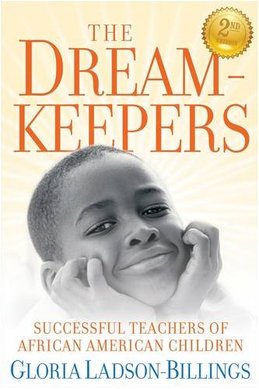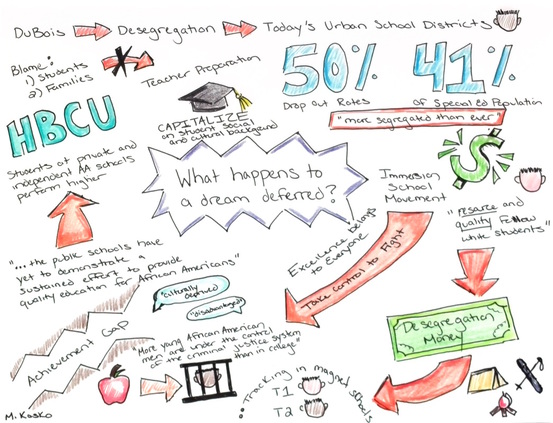ImagineIT Phase 4 |
Much education today is monumentally ineffective. All too often we are giving young people cut flowers when we should be teaching them to grow their own plants. - John W. Gardner
|

For my fall reading I chose to read "The Dreamkeepers" by Gloria Ladson-Billings. I chose this book because like some of the teachers that Ladson-Billings features in her book, I am a white teacher who has worked exclusively on Chicago's west side in predominately African American schools. In choosing this book I wanted to gain insight into working with urban youth in hopes of strengthening the relationships I already have with my students.
In Chapter 3, "Seeing Culture, Seeing Color", Ladson-Billings discusses the difference between a culturally relevant and assimilationist teaching styles. Teachers that claim to be color blind are guilty of "dysconscious racism" (p. 35) by equating equality with sameness. These colorblind interactions have also been shown to be negatively affect ethnic minorities' cognitive functioning (Holoien & Shelton, 2012). These teachers are more likely to be assimilationists and strive to homogenize students and view themselves as the givers of knowledge. On the other hand, culturally relevant teachers help students to make connections between their community, national, and global identities and see teaching as a pulling knowledge out of students.
Unfortunately, I have seen more assimilationist teachers than culturally relevant ones in my time in the district. Through project based learning, implementing 20% projects, and rooting instruction in observing phenomenon, I have attempted to "draw out" knowledge from my students rather than fill them with knowledge. However, students have had difficulties adapting to these new learning not because they are incapable of being successful with them, but because they are unfamiliar with them from both previous years of instructions and the other teachers they see during the day. The raises two questions for my ImagineIT project:
In Chapter 3, "Seeing Culture, Seeing Color", Ladson-Billings discusses the difference between a culturally relevant and assimilationist teaching styles. Teachers that claim to be color blind are guilty of "dysconscious racism" (p. 35) by equating equality with sameness. These colorblind interactions have also been shown to be negatively affect ethnic minorities' cognitive functioning (Holoien & Shelton, 2012). These teachers are more likely to be assimilationists and strive to homogenize students and view themselves as the givers of knowledge. On the other hand, culturally relevant teachers help students to make connections between their community, national, and global identities and see teaching as a pulling knowledge out of students.
Unfortunately, I have seen more assimilationist teachers than culturally relevant ones in my time in the district. Through project based learning, implementing 20% projects, and rooting instruction in observing phenomenon, I have attempted to "draw out" knowledge from my students rather than fill them with knowledge. However, students have had difficulties adapting to these new learning not because they are incapable of being successful with them, but because they are unfamiliar with them from both previous years of instructions and the other teachers they see during the day. The raises two questions for my ImagineIT project:
- Since am looking at how I can increase science identity in my students through culturally relevant practices, how feasible is this when I see my students for 50 minutes a day and they are not being asked to actively take on the role of a professional in their other classes?
- How can I effectively partner with my coworkers and move them to implementing more culturally relevant practices relatively quickly in my limited role as a mid-level leader in the school?
Sources
- Holoien, D. S., & Shelton, J. N. (2012). You deplete me: The cognitive costs of colorblindness on ethnic minorities. Journal of Experimental Social Psychology, 48(2), 562-565.
- Ladson-Billings, G. (2009). The Dreamkeepers: Successful teachers of African American children (2nd ed.). San Francisco, Calif.: Jossey-Bass Publishers.
